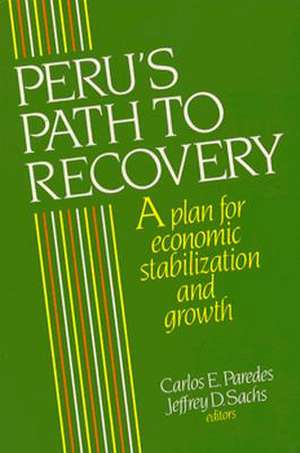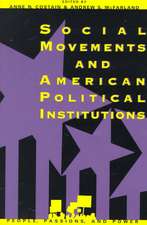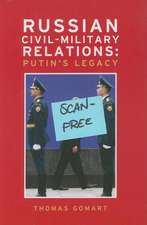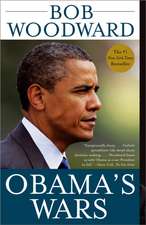Peru's Path to Recovery: A Plan for Economic Stabilization and Growth
Editat de Carlos E. Paredes, Jeffrey D. Sachsen Limba Engleză Paperback – dec 1991
For the past fifteen years Peru has suffered a profound and lasting economic crisis that threatens the stability of the country's fragile democratic system. Economic mismanagement has led to plummeting per capita income, accelerating inflation—an annualized rate of nearly 3,000 percent by 1989—and widespread social upheaval. This study by experts in the United States and Latin America offers a coherent proposal for economic stabilization and structural adjustment to restore economic growth—but growth with equity—to this distressed country.
The contributors provide background analysis and thorough diagnosis of Peru's economic problems. They explain how inconsistent populist policies and the ensuing economic crisis have caused the standard of living to deteriorate dramatically, paving the way for significant expansion of social violence, political instability, and isolation from the international financial community.
Peru's Path to Recovery offers an adjustment program that is sound but also is complemented by a social support program to assist the poor - those who have suffered the most from previous disadjustment. This combination makes the program both equitable and politically sustainable. With the inauguration of Alberto Fujimori, Peru has the opportunity to embrace a new economic strategy to stabilize the economy, curtail the extreme poverty, and reduce the massive unemployment and underemployment. Such a course will not be easy: patterns of government, business, and social behavior will have to change. But through such changes Peru can hope to become a stable, thriving country once more.
The contributors provide background analysis and thorough diagnosis of Peru's economic problems. They explain how inconsistent populist policies and the ensuing economic crisis have caused the standard of living to deteriorate dramatically, paving the way for significant expansion of social violence, political instability, and isolation from the international financial community.
Peru's Path to Recovery offers an adjustment program that is sound but also is complemented by a social support program to assist the poor - those who have suffered the most from previous disadjustment. This combination makes the program both equitable and politically sustainable. With the inauguration of Alberto Fujimori, Peru has the opportunity to embrace a new economic strategy to stabilize the economy, curtail the extreme poverty, and reduce the massive unemployment and underemployment. Such a course will not be easy: patterns of government, business, and social behavior will have to change. But through such changes Peru can hope to become a stable, thriving country once more.
Preț: 219.04 lei
Nou
Puncte Express: 329
Preț estimativ în valută:
41.93€ • 45.56$ • 35.24£
41.93€ • 45.56$ • 35.24£
Carte tipărită la comandă
Livrare economică 21 aprilie-05 mai
Preluare comenzi: 021 569.72.76
Specificații
ISBN-13: 9780815769132
ISBN-10: 081576913X
Pagini: 336
Ilustrații: illustrations
Dimensiuni: 152 x 229 x 24 mm
Greutate: 0.47 kg
Ediția:New.
Editura: Brookings Institution Press
Colecția Brookings Institution Press
ISBN-10: 081576913X
Pagini: 336
Ilustrații: illustrations
Dimensiuni: 152 x 229 x 24 mm
Greutate: 0.47 kg
Ediția:New.
Editura: Brookings Institution Press
Colecția Brookings Institution Press
Notă biografică
Carlos E. Paredes is a research associate in the Brookings Economic Studies program and a former executive director of GRADE, an economic research center based in Lima, Peru. Jeffrey D. Sachs of Harvard University has helped design different stabilization programs around the world and is currently an economic adviser to several Latin American and East European governments.
Descriere
For the past fifteen years Peru has suffered a profound and lasting economic crisis that threatens the stability of the country's fragile democratic system. Economic mismanagement has led to plummeting per capita income, accelerating inflation—an annualized rate of nearly 3,000 percent by 1989—and widespread social upheaval. This study by experts in the United States and Latin America offers a coherent proposal for economic stabilization and structural adjustment to restore economic growth—but growth with equity—to this distressed country.
The contributors provide background analysis and thorough diagnosis of Peru's economic problems. They explain how inconsistent populist policies and the ensuing economic crisis have caused the standard of living to deteriorate dramatically, paving the way for significant expansion of social violence, political instability, and isolation from the international financial community.
Peru's Path to Recovery offers an adjustment program that is sound but also is complemented by a social support program to assist the poor - those who have suffered the most from previous disadjustment. This combination makes the program both equitable and politically sustainable. With the inauguration of Alberto Fujimori, Peru has the opportunity to embrace a new economic strategy to stabilize the economy, curtail the extreme poverty, and reduce the massive unemployment and underemployment. Such a course will not be easy: patterns of government, business, and social behavior will have to change. But through such changes Peru can hope to become a stable, thriving country once more.
The contributors provide background analysis and thorough diagnosis of Peru's economic problems. They explain how inconsistent populist policies and the ensuing economic crisis have caused the standard of living to deteriorate dramatically, paving the way for significant expansion of social violence, political instability, and isolation from the international financial community.
Peru's Path to Recovery offers an adjustment program that is sound but also is complemented by a social support program to assist the poor - those who have suffered the most from previous disadjustment. This combination makes the program both equitable and politically sustainable. With the inauguration of Alberto Fujimori, Peru has the opportunity to embrace a new economic strategy to stabilize the economy, curtail the extreme poverty, and reduce the massive unemployment and underemployment. Such a course will not be easy: patterns of government, business, and social behavior will have to change. But through such changes Peru can hope to become a stable, thriving country once more.















